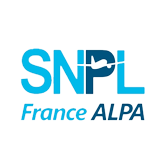
EASA Safety Information Bulletin – Infections Operational Recommendations (Update 2 avril)
COVID19_20200402 EASA_SIB_Coronavirus ‘SARS-CoV-2’ Infections – Operational Recommendations
Safety Bulletin IFALPA: Auckland (NZAA) Unplanned Runway Closures
The Auckland Airport runway 23L/05R has been deteriorating over the past few years. The maintenance required to keep the runway surface in a usable condition has increased significantly, however, this has not kept up with the rate at which the runway is deteriorating. As a result, there have been over 15 short notice unplanned runway closures. One, on 24 January 2020, resulted in the runway being closed for 40 minutes and causing the diversion of 9 aircraft, including a wide body international arrival.
COVID19_20200201 EASA Coronavirus SIB
Safety Bulletin IFALPA: Ninoy Aquino International Airport (MNL), the Philippines
This Operational Notice from IATA alerts airlines of the on-going risk to aircraft operations at MNL due to unaddressed deficiencies on the airfield.
Safety Bulletin IFALPA: New Approaches for Haneda
Due to the upcoming Olympics in Tokyo, Japan, there is a requirement to increase throughput at Tokyo’s Haneda airport. In order to achieve this throughput, it is necessary to introduce approaches to the previously unused approach Runways 16L&R. These runways have not been used for approaches previously due to noise concerns for the public. In order to appease the local public regarding the noise pollution, the JCAB (Japan Civil Aviation Bureau) has created RNP approaches and ILS approaches to runways 16L&R.
Safety Bulletin: Aircrews and Ionizing Radiation
Flying exposes aircrew to ionizing and non-ionizing radiation. Non-ionizing radiation (e.g. UV-radiation exposure) is not addressed in this Briefing Leaflet. Ionizing radiation has enough energy to produce ions by pulling electrons from atoms and molecules. Ionizing radiation can be electromagnetic, such as x-rays and gamma-rays, or corpuscular, such as alpha particles, electrons, neutrons, protons, or heavyions.
Safety Bulletin: Suvarnabhumi International Airport (BKK)
This reissued Operational Notice alerts airlines of the on-going risk to aircraft operations at BKK airport due to soft ground conditions affecting the taxiways, taxi lanes and aircraft stands. Soft ground conditions or “soft spots” have been encountered and reported by flight crews and ground service providers at BKK since at least 2008.
Safety Bulletin: IATA In-Flight Broadcast Procedure (IFBP) AFI Region
This IATA Operations Notice replaces 14SAB004 - IATA In-flight Broadcast Procedure (IFBP) Revision 7, in total.
Safety Bulletin: NAT Lateral ASEPS
On March 2019, longitudinal separation standards were reduced based on the availability of Space-Based ADS-B in the Shanwick (EGGX), Gander (CZQX), and Santa Maria (LPPO) Oceanic Control Areas in the North Atlantic (NAT), as part of the Advanced Surveillance Enhanced Procedural Separation (ASEPS) trials. The NAT region will be commencing the second phase of the ASEPS trials to include reduced lateral separation starting on or about 10 October 2019.
